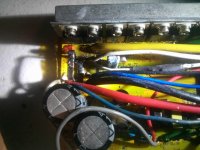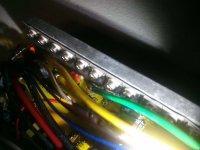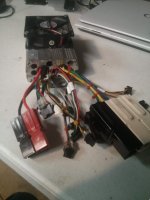themadhatter106
100 W
So, I've had my Lyen 12 FET controller for a long time and just recently modded it. I beefed up the traces, soldered the shunt and added an additional shunt. I also added a cooling fan and vent holes to get some airflow inside. The controller worked fine right after I modded it but the high current was causing my BMS to cut out so I reprogrammed the controller for lower current so I could ride around and figure out the new Rshunt value with an amp meter, and everything was fine.
However, when I programmed again for higher current and twisted the throttle there was a small noise from my motor and then nothing. No response from the throttle, checked the connectors and there was no problem. It seemed like every time I would reprogram the controller it would work for a split second and then do nothing afterward. One time when I was very easy on the throttle I got it to work. I was able to have the motor move the bike at a crawl speed but then when I gave it some throttle the controller stopped working and there was no response from the throttle.
I am programming using the profile 124110_Profile.asv which uses the EB318 board type.
Its so frustrating to go through all of the hours of work modding the controller, have it work and then stop working when I change the settings again! Can anyone help?
However, when I programmed again for higher current and twisted the throttle there was a small noise from my motor and then nothing. No response from the throttle, checked the connectors and there was no problem. It seemed like every time I would reprogram the controller it would work for a split second and then do nothing afterward. One time when I was very easy on the throttle I got it to work. I was able to have the motor move the bike at a crawl speed but then when I gave it some throttle the controller stopped working and there was no response from the throttle.
I am programming using the profile 124110_Profile.asv which uses the EB318 board type.
Its so frustrating to go through all of the hours of work modding the controller, have it work and then stop working when I change the settings again! Can anyone help?




